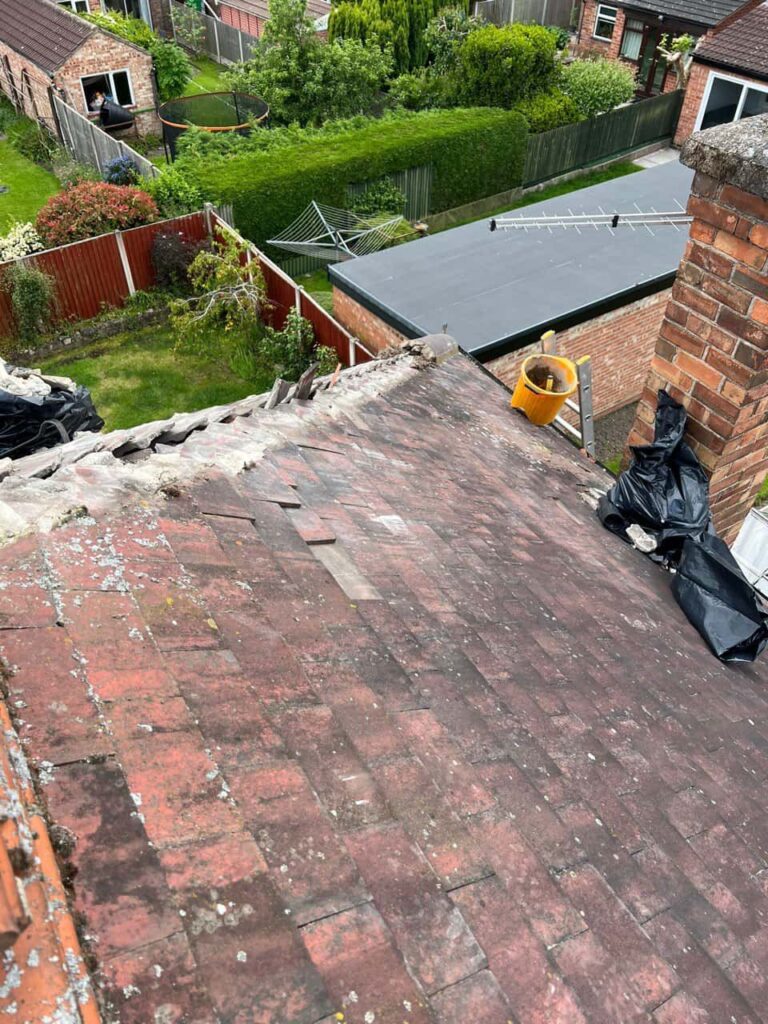Introduction: Roof leaks are a common concern for homeowners, and one of the primary culprits behind these leaks is faulty or damaged flashing. At Westerham Roofing Repairs, we understand the critical role that flashing plays in maintaining a watertight roof. This blog post will help you identify roof leaks caused by flashing issues, helping you protect your home from water damage.
Understanding Roof Flashing
Flashing is a thin, impermeable material installed around roof joints, edges, and penetrations (such as chimneys, vents, and skylights) to prevent water from seeping into the structure. Common materials used for flashing include aluminium, copper, and galvanised steel. Despite its durability, flashing can deteriorate over time due to weather exposure, poor installation, or physical damage, leading to roof leaks.
Common Signs of Flashing Issues
- Water Stains on Ceilings and Walls
- Indicator: Discoloured patches or water stains on your ceilings or walls can indicate a leak caused by compromised flashing.
- Action: Inspect the areas around chimneys, vents, and skylights where flashing is installed to identify gaps or damage.
- Visible Rust or Corrosion
- Indicator: Rust or corrosion on metal flashing can weaken its integrity, allowing water to penetrate the roof.
- Action: Regularly check metal flashing for signs of rust or corrosion. Replace affected sections promptly to maintain a watertight seal.
- Cracked or Missing Sealant
- Indicator: The sealant to secure flashing can crack or wear away over time, especially under harsh weather conditions.
- Action: Inspect the sealant around the flashing for cracks or gaps. Reapply or replace the sealant as needed to ensure a proper seal.
- Loose or Detached Flashing
- Indicator: Flashing that has become loose or detached from the roof surface can create openings for water to enter.
- Action: Check for any flashing that appears loose or is not securely attached. Refasten or replace it to prevent leaks.
- Damp or Musty Odours
- Indicator: Persistent damp or musty smells in your attic or other home areas can indicate hidden water damage caused by flashing issues.
- Action: Investigate the source of the odour, focusing on areas around roof penetrations. Address any moisture problems and repair the flashing as necessary.
Steps to Identify Roof Leaks Caused by Flashing Issues
- Visual Inspection
- Conduct a thorough visual inspection of your roof, focusing on areas where flashing is installed. Look for signs of damage, wear, or improper installation. Use binoculars to inspect hard-to-reach areas from the ground.
- Check Inside the Attic
- Inspect your attic for signs of water intrusion, such as damp insulation, water stains, or mould growth. Pay close attention to areas beneath roof penetrations and along roof edges.
- Test with a Hose
- On a dry day, use a garden hose to simulate rain by gently spraying water on specific sections of your roof. Have a helper inside the house to check for any signs of leaks. Focus on areas with flashing to pinpoint the source of the leak.
- Professional Inspection
- If you need clarification about the condition of your flashing or help locating the leak’s source, consider scheduling a professional roof inspection. Experienced roofers can more effectively identify and address flashing issues.
Preventative Measures
- Regular Maintenance
- Regularly inspect and maintain your roof, paying particular attention to flashing. Address minor issues promptly to prevent them from becoming major problems.
- Proper Installation
- Ensure that experienced professionals install flashings correctly. Proper installation is crucial for preventing leaks and maintaining the integrity of your roof.
- Quality Materials
- Use high-quality, durable, and weather-resistant flashing materials. Investing in quality materials can extend the lifespan of your flashing and reduce the likelihood of leaks.
- Timely Repairs
- Address any signs of flashing damage immediately. Timely repairs can prevent water from penetrating your roof and causing extensive damage to your home.
Conclusion: Identifying roof leaks caused by flashing issues is essential for maintaining a watertight and durable roof. Understanding the common signs of flashing problems and taking proactive measures can protect your home from water damage. At Westerham Roofing Repairs, we offer expert flashing repair and maintenance services to help you keep your roof in top condition.
Call us on: 01959 584 099
Click here to find out more about Westerham Roofing Repairs
Click here to complete our contact form and see how we can help you with your roofing needs.

